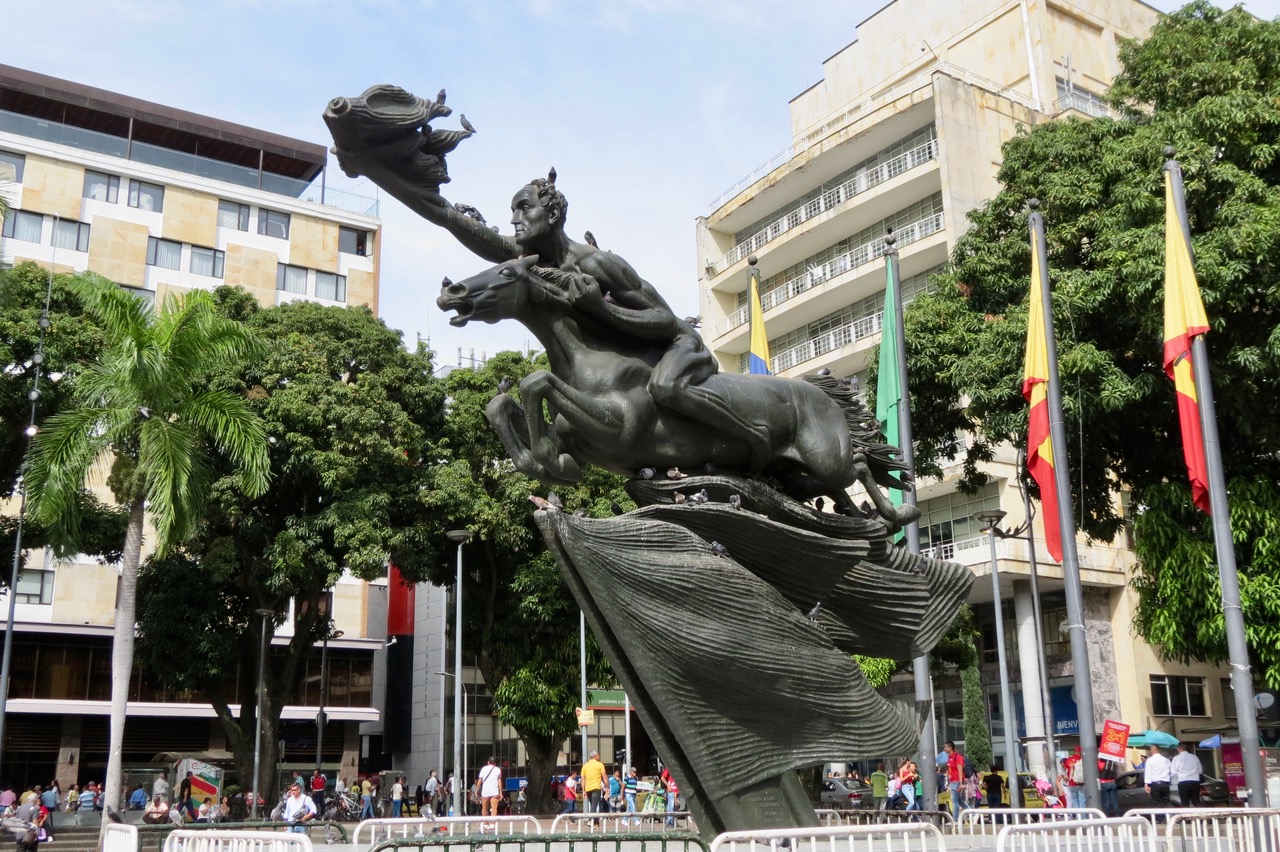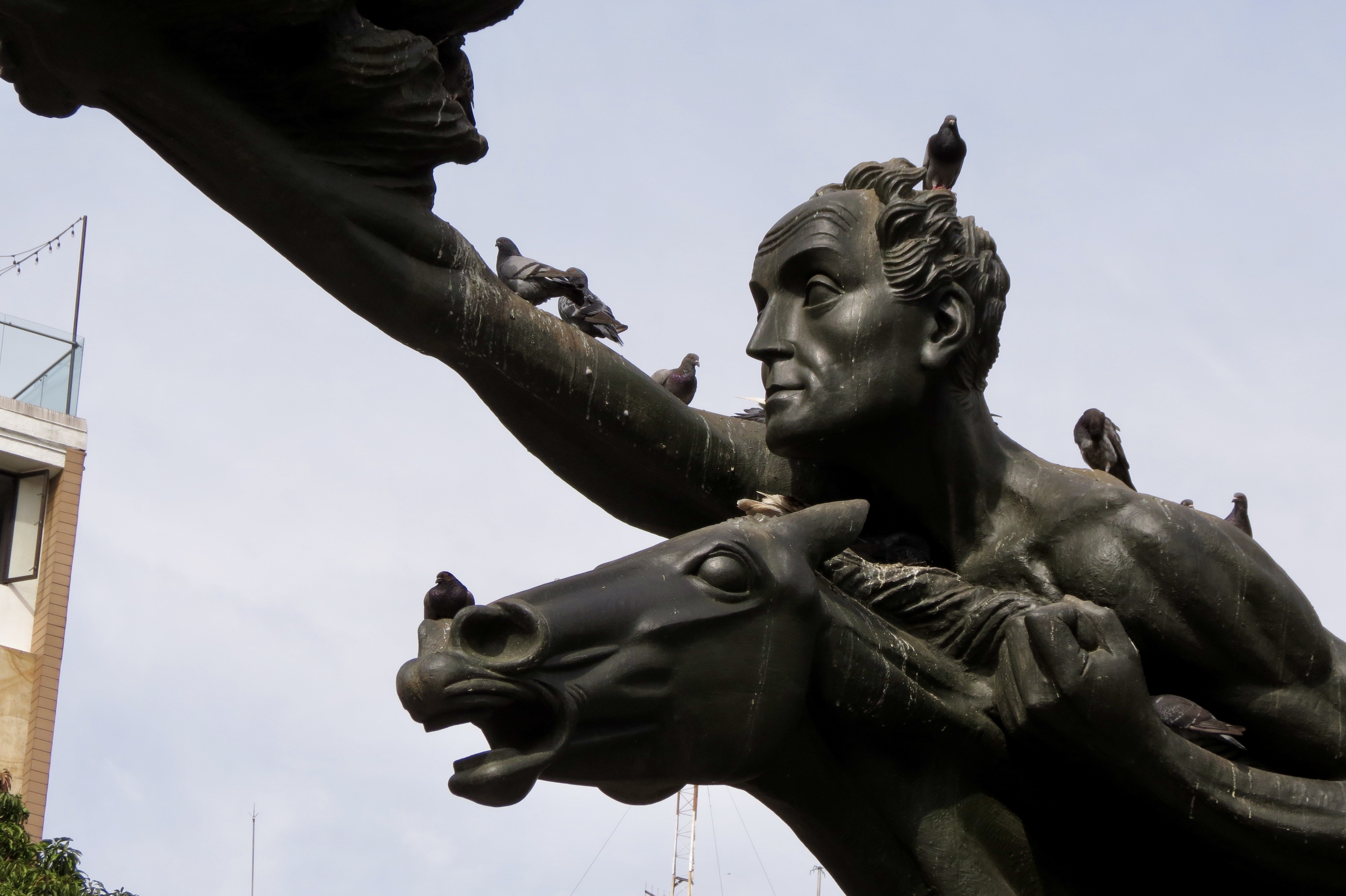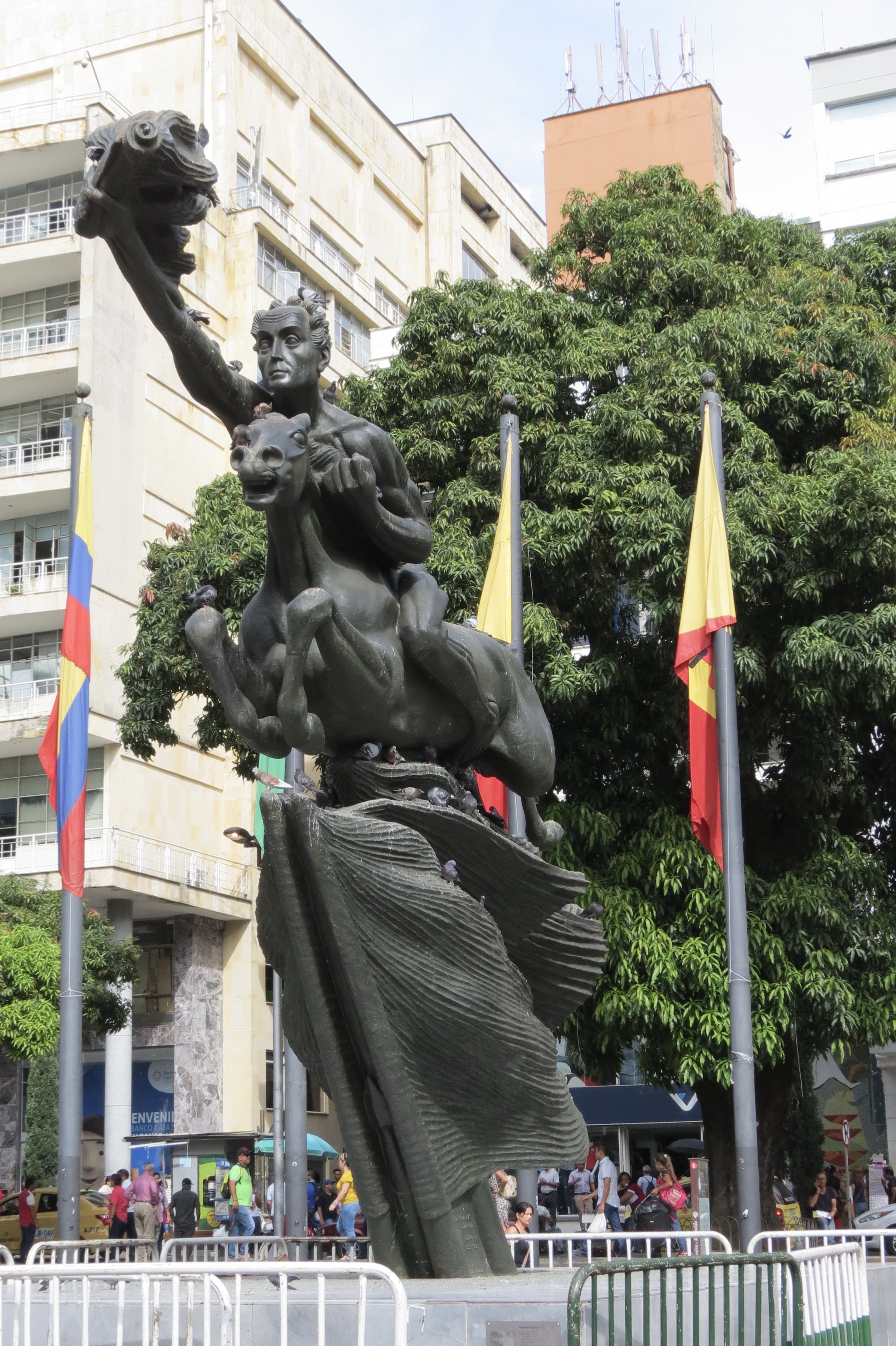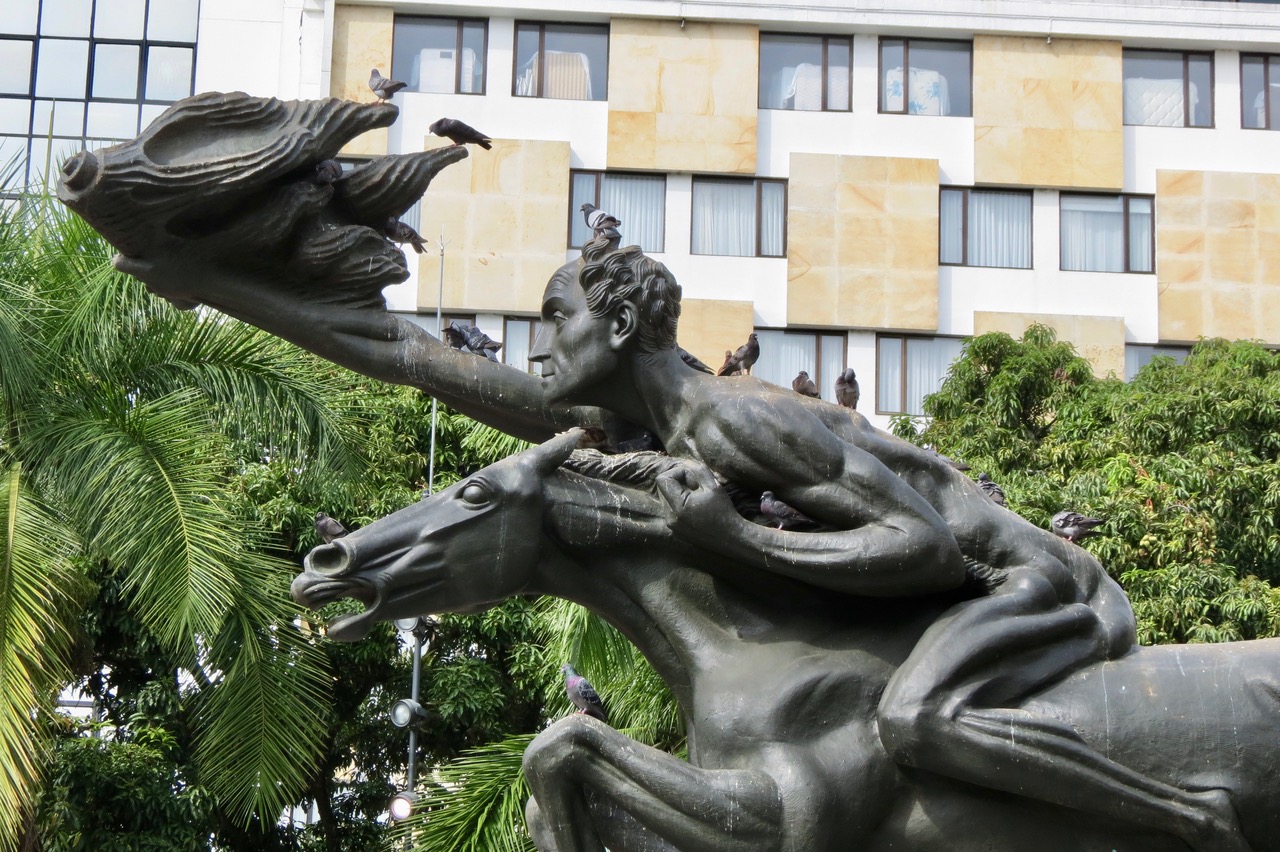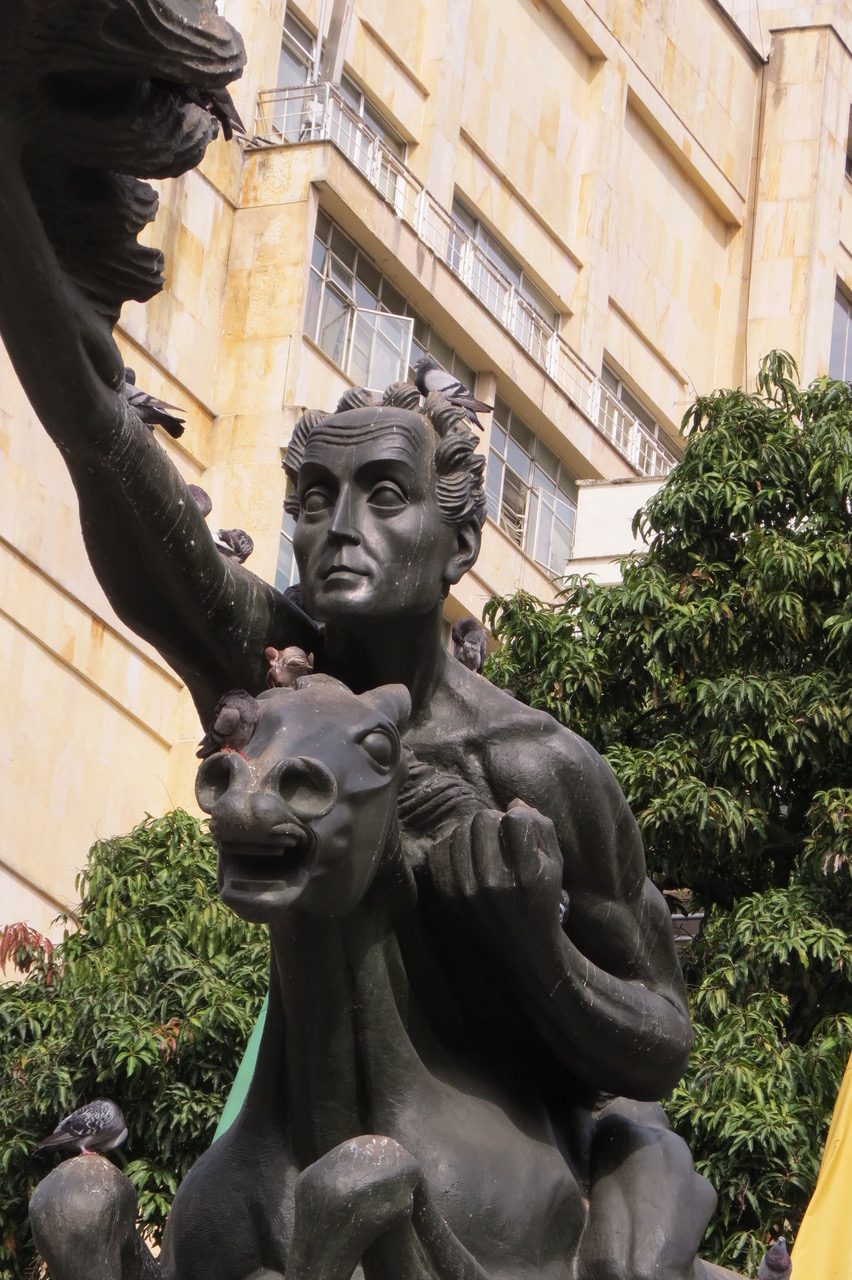- CountryColombia
- Town:Pereira
-
Year of creation:1963
- Rider(s):Bolivar, Simon
(1783 –1830) played a key role in liberating Venezuela, Colombia, Ecuador, Peru (together with José de San Martín), and Boliviafrom Spanish rule.
Born in Venezuela, Bolivar got a great deal of his education in France and Spain. He returned to Venezuela and got a military command in New Granada (nowadays Colombia) in 1813. In 1819 he successfully finalized a campaign for the independence of New Granada and launched from this stronghold independence campaigns in Venezuela and Ecuador, which he concluded with victories in 1821 and 1822. He became President of the new state Gran Colombia, which covered much of nowadays Colombia, Panama, Venezuela, Ecuador, northern Peru and the northwest of Brazil. In 1822 he took over the task of José de San Martin of fully liberating Peru.
Assisted by Antonio José de Sucre, Bolívar defeated the Spanish forces in 1824, resulting in the creation of the Republic of Bolivia, a country named after its liberator. Bolívar had great difficulties maintaining control of the vast Gran Colombia. After failing to write a new constitution, he proclaimed himself dictator in 1828, meant as a temporary measure to reestablish his authority and to save the republic. He survived an assassination attempt in 1828. Two years of uprisings followed. Bolivar resigned his presidency in 1830 and died in the same year, before he could go into exile in France as he intended.
Bolivar was an admirer of George Washington. They shared the same objective: independence for their people and the establishment of a democratic state. They differed, however, on two important matters. Bolivar was anti-slavery, despite coming from an area that relied heavily on slave labor, and he did not believe that the US system could function in Latin America, claiming that the governance of heterogeneous societies like Gran Colombia “will require an infinitely firm hand”.
(source Wikipedia)
- Sculptor(s):Betancourt, Rodrigo Arenas
(1919 – 1995) was a Colombian sculptor.
-
There’s something unusual about this statue of Simón Bolívar. The Liberator is perched atop a charging steed, his arm outstretched, as he races onward. The horse wears no tack, and, most unusually, Bolívar wears no clothing. The only public monument showing Bolívar without clothing, medals, or swords is a symbol of liberty and a message for equality. Wanting something unique to commemorate the centennial for the city of Pereira, Lázaro Nicholls, a past mayor, commissioned the famed sculptor Rodrigo Arenas Betancourt to come up with an image of Bolívar that would set up this city’s plaza apart from the rest. Initially the monument was going to depict a Bolívar fully dressed in military attire, however, the artist thought it was a better idea for the sculpture to portray the revolutionary in a different way. Stripped of his military garb and accolades, this statue exudes a sense of freedom. Bolívar is shown galloping on his stallion, unrestrained and independent, while charging onward. Bolívar’s nudity serves a second purpose, as the statue’s lack of clothing also symbolizes equality. Naturally, this unconventional depiction of Bolívar attracted its fair share of criticism and backlash. But today, more than 50 years since the monument was unveiled, it remains a celebrated local attraction.
